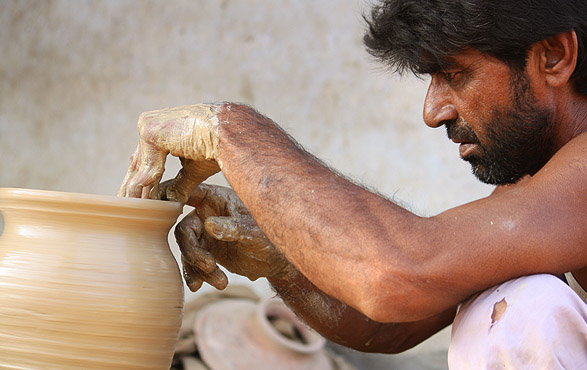Matka – The earthen pot

When gods and demons were churning the ocean (Sheersagar) for the divine Nectar (Mahamrita), an earthen pot emerged. This is believed to be the first earthen pot ever created by the potters. Commonly known as Matkas, earthen pots are a vital accessory for Indian kitchens. They function as traditional refrigerators. The porous nature of these pots makes the accommodated water sift through the pores. The sifted water extracts heat from the water contained in the pot and evaporates from the surface. It’s a continuous process, which keeps the surface of the pot moist and keeps the water temperature low. The more is the ambient heat, the more will be the cooling effect.
The process of making these simple earthen pots involves many steps and contrary to popular belief, the potter’s wheel only assists in initial molding of clay.
The process starts with the soft clay being shaped on potter’s wheel, after attaining the desired cylinder like shape, the molded piece is separated at the base with the help of a thread. This shape is then put to dry to gain some rigidity. The pot is again cleaned and formed with a shaping pad and a wooden beater. To give a uniform wall thickness to the pot and impart a fine spherical shape, the potter presses the shaping pad on the inside of the pot and beats the outer surface continuously with the wooden beater.
Final shape is painted with clay of different colors and fired in a klin. Afterwards these pots are cleaned and checked for any defects. The earthenware fired in open kiln on the ground has auburn or brownish red appearance and the pieces fired in underground or closed kiln are black in color.
Read in detail – Gaatha.org











